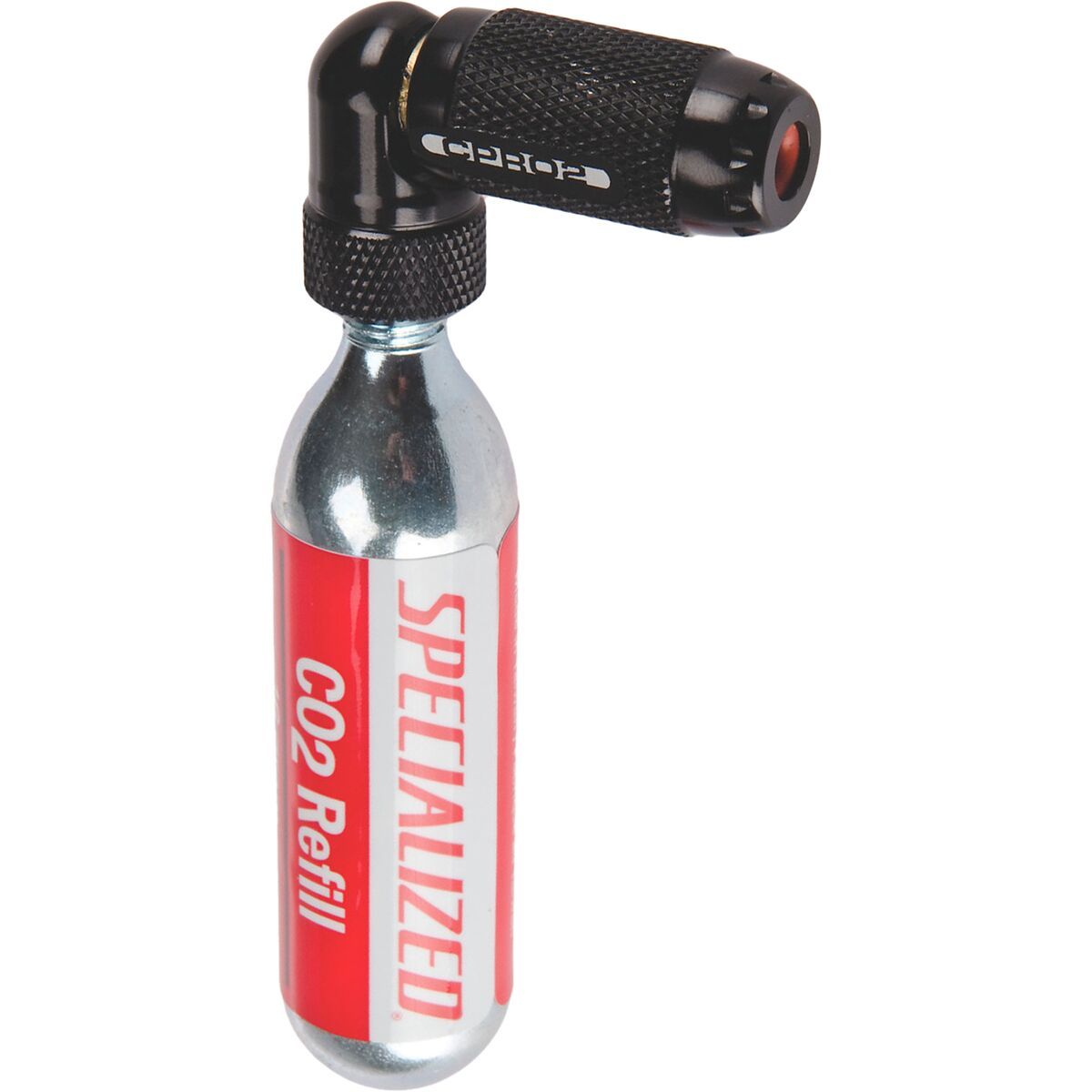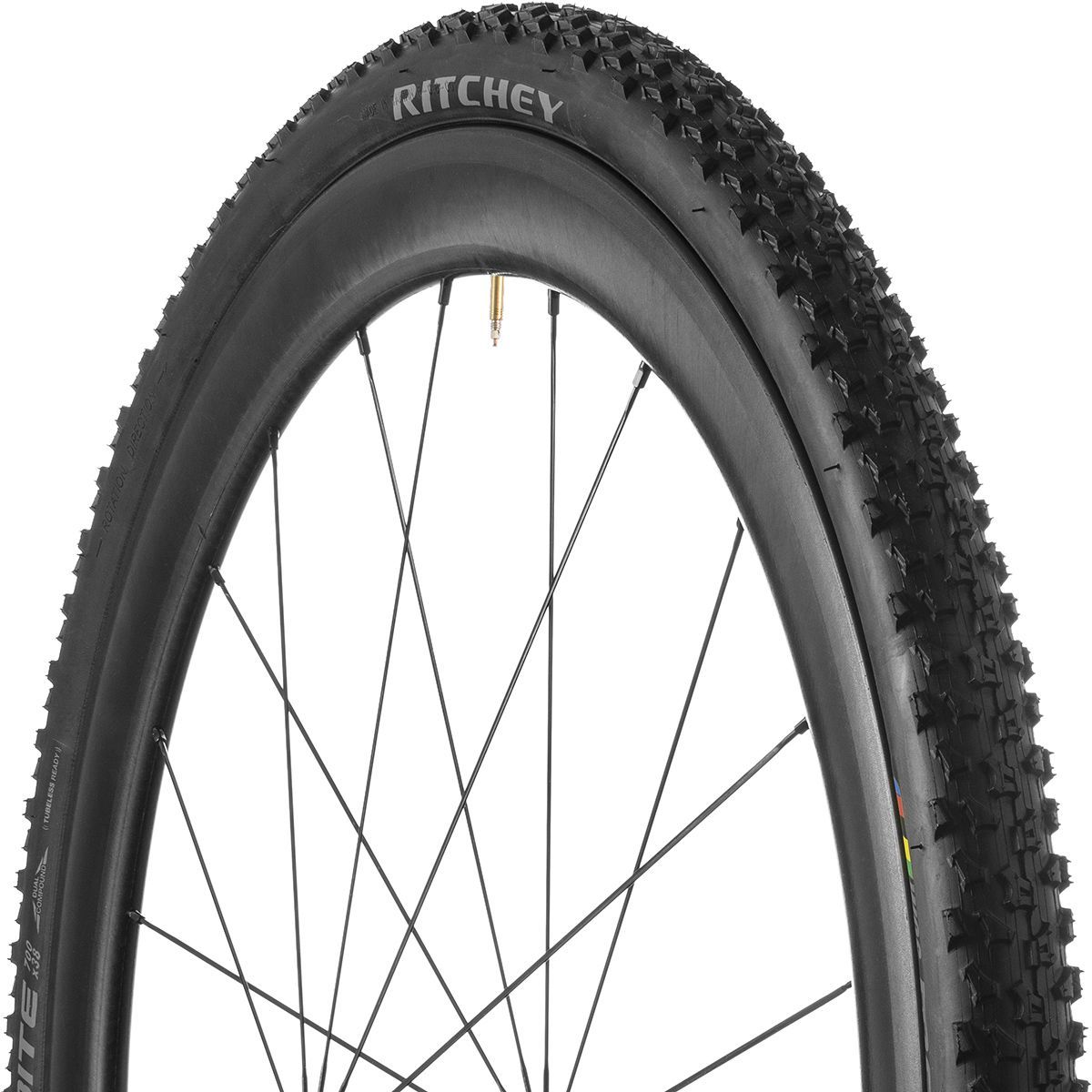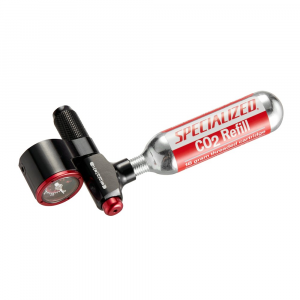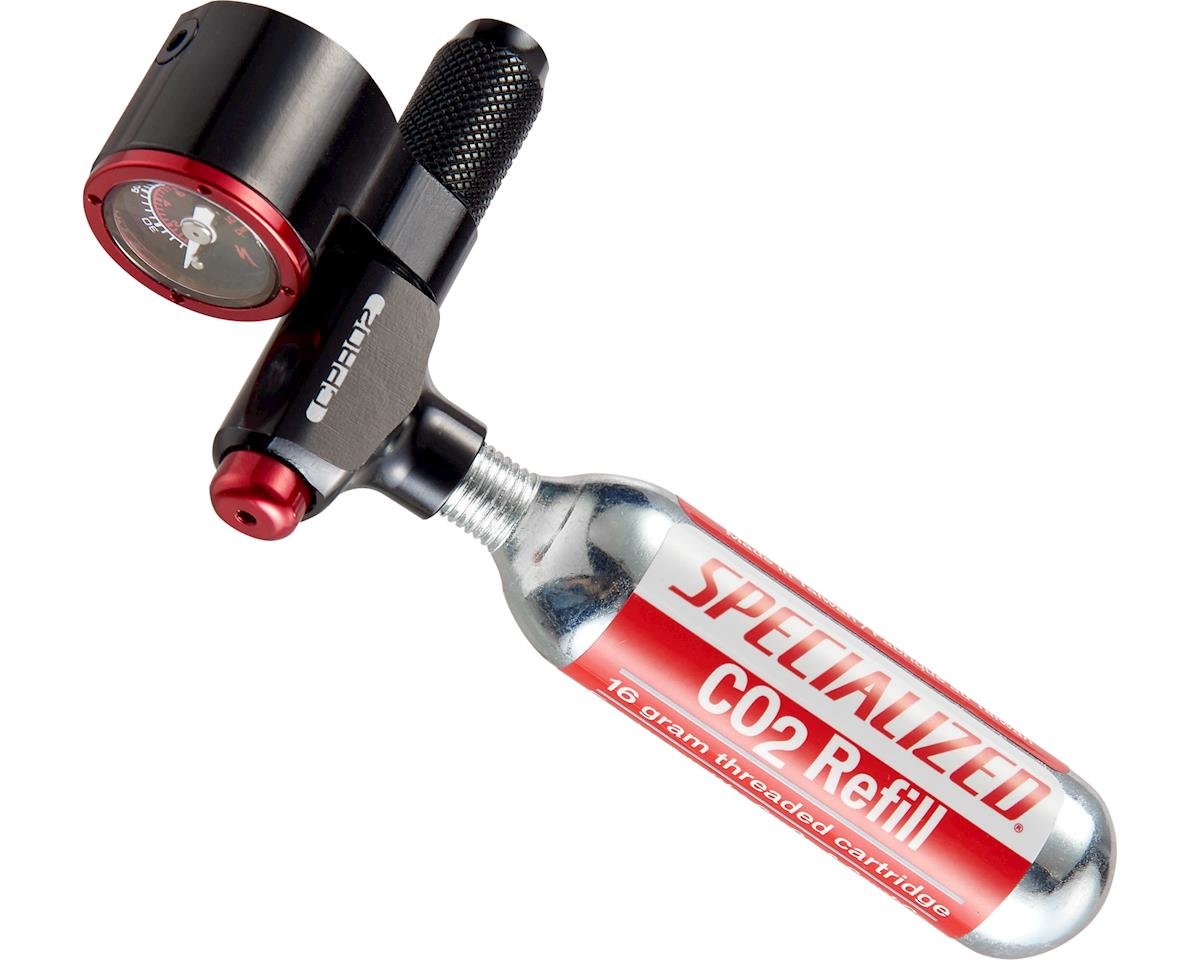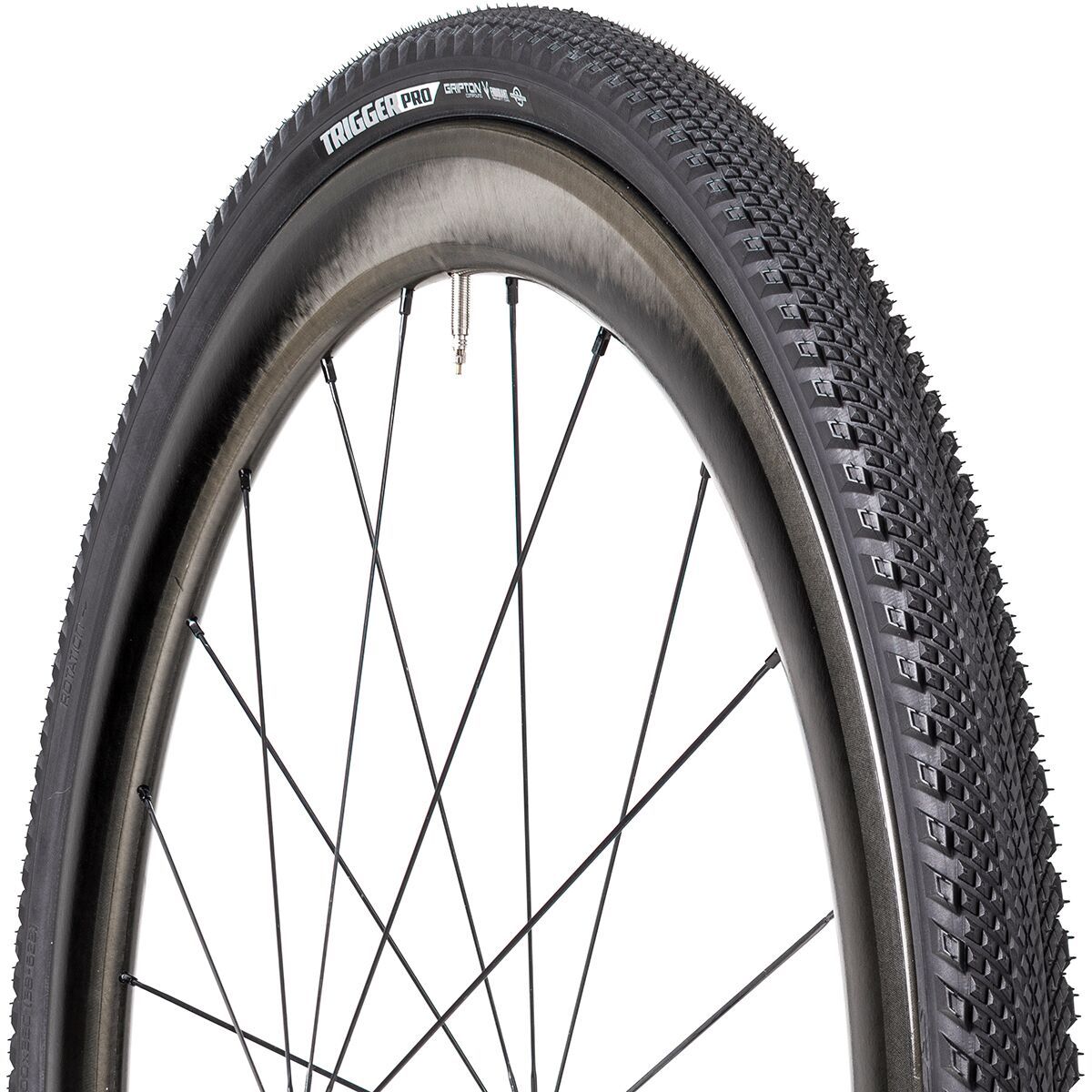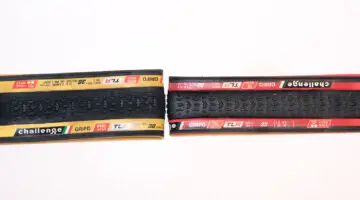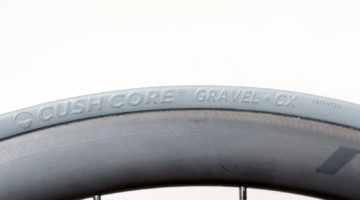We have been proponents of low pressure tubeless for cyclocross for nearly a decade now, starting with conversions that evolved to where tubeless for ’cross and gravel is now. Nearly every disc wheel for cyclocross and gravel is “tubeless-ready” with a beadshelf, and tubeless-ready tires now come with an air-sealing layer in the casing.
Before tubeless hit cyclocross in 2009, it was the rage with mountain bike enthusiasts—who arguably push the tire/wheel combination the hardest—and they found the tubeless system all but eliminated pinch flats and simultaneously reduced rolling resistance. Traction and ride quality improved with the ability to run lower air pressure, since pinching the tube was no longer a problem.
As tire pressure lowers, the risk of “bottoming” the tire onto the rim increases. That can lead to a pinch flat from a tire cut, or a rim dent or crack from the impact. Also tire rebound of a soft tire can sometimes be unnerving, as is sidewall fold-over with hard cornering.
The CushCore insert is a product designed to help address some of these issues that come with running low pressures in tubeless tires. We first saw the CushCore insert at Sea Otter, and we have now had a chance to put the company’s new Gravel/CX version to the test for ourselves.
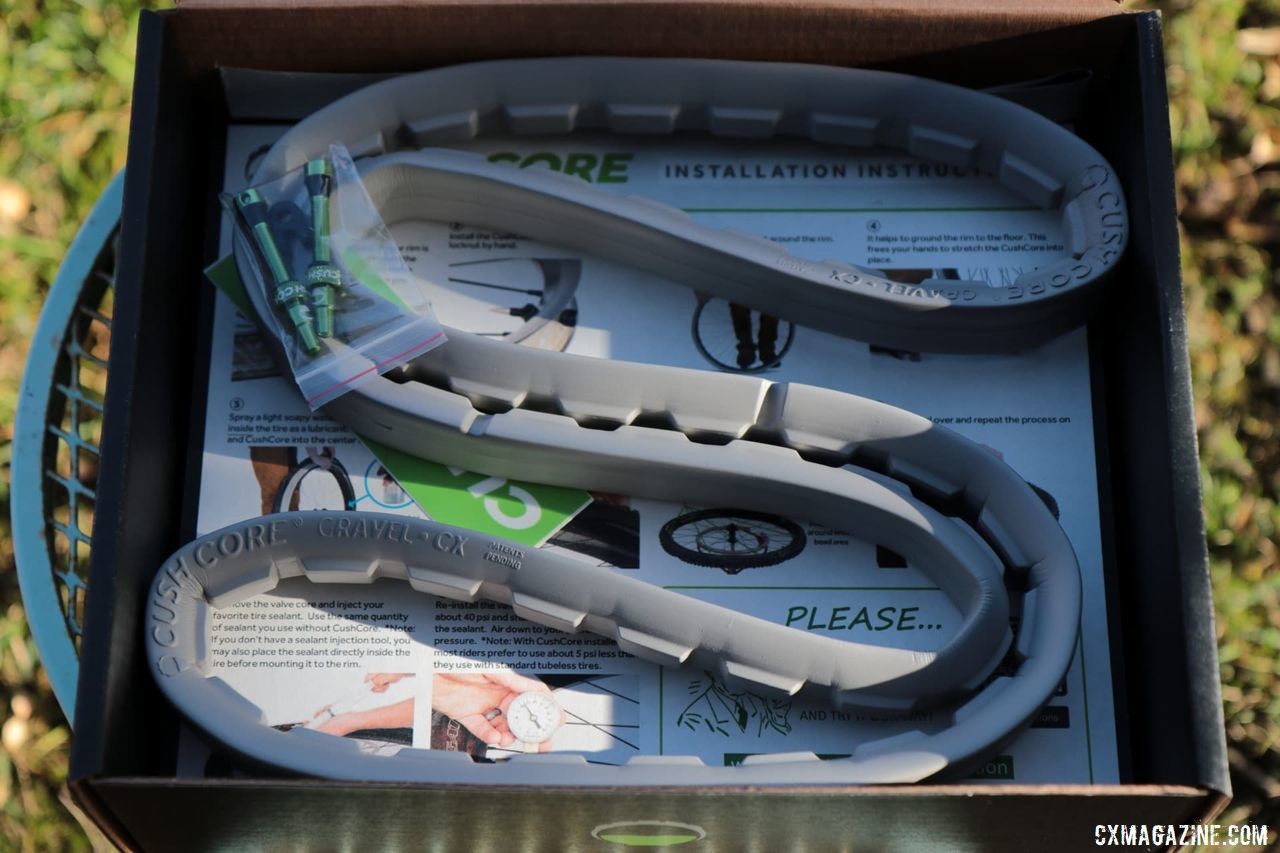
The kit comes with two inserts and two valve stems. CushCore Gravel/CX Insert. © A. Yee / Cyclocross Magazine
CushCore Gravel/CX Kit
The CushCore insert is a closed-cell foam insert that fills a portion of the tire volume. Think of a foam ring that fits around the rim and with the tire fit over it.
In cross-section, the insert fills about one-third of the rim portion of the tire lumen. That has several effects—it disallows the tire from flattening out with impact, it damps the bounce of the tire by interacting with the sidewall, it keeps the bead on the bead shelf avoiding the burp, it supports the tire casing when the wheel leans in turns avoiding the fold-over and it adds 125g for the Gravel/CX version.
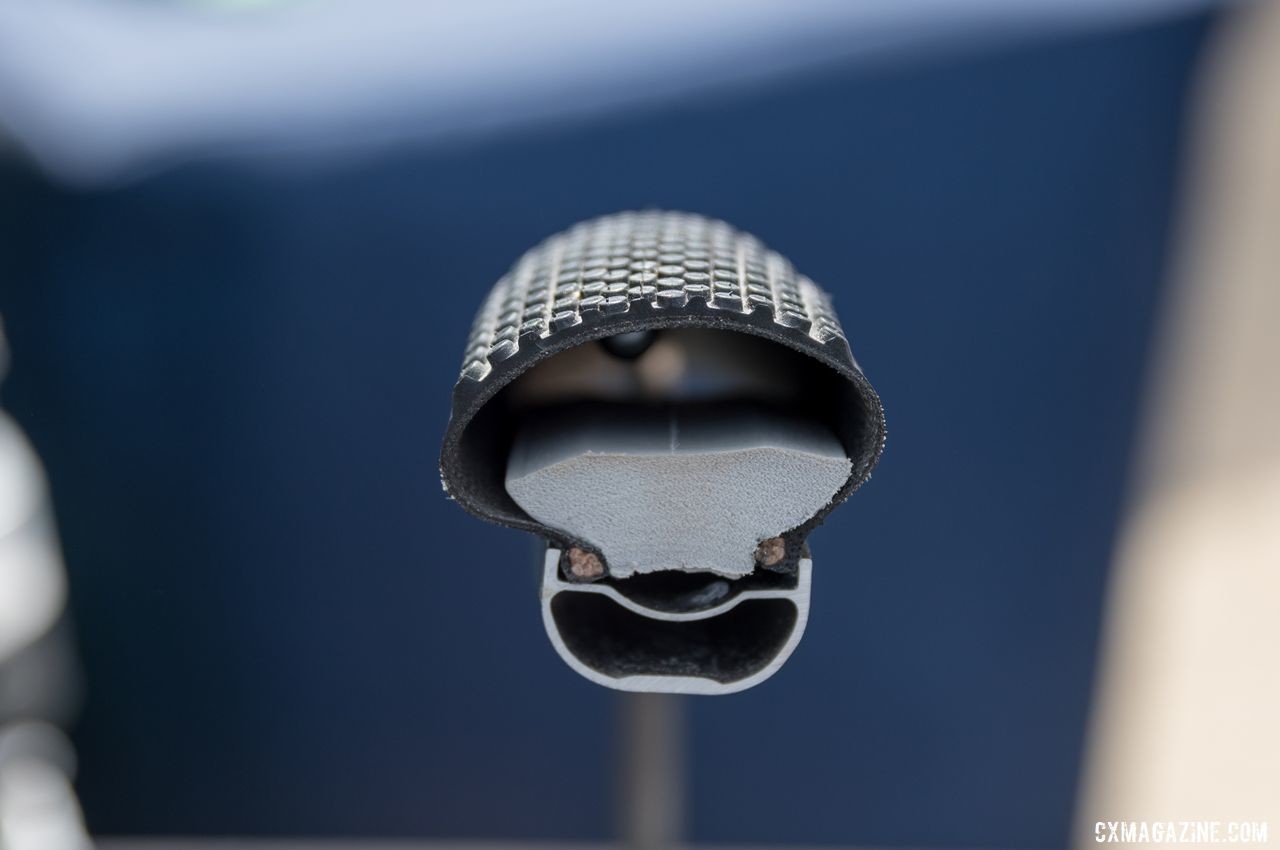
CushCore demoed how the Cushcore insert fits the tire. Cushcore Gravel Tire Insert, 2019 Sea Otter Classic. © C. Lee / Cyclocross Magazine
Gravity enthusiast and KTM motorcycle suspension engineer Adam Krefting originally designed the CushCore for downhill mountain biking. The seemingly simple product took him two years of prototype design to arrive at his desired fit, durability and ride quality.
Although riding downhill is now a part of gravel events such as Grinduro, we were most interested in testing out the Gravel/CX CushCore kit. The kit comes with 2 inserts designed for 700c tires 33 to 46mm wide and 2 special valve stems. The kit costs $150, and each insert weighs 125g, which is 15g heavier than the claimed weight.
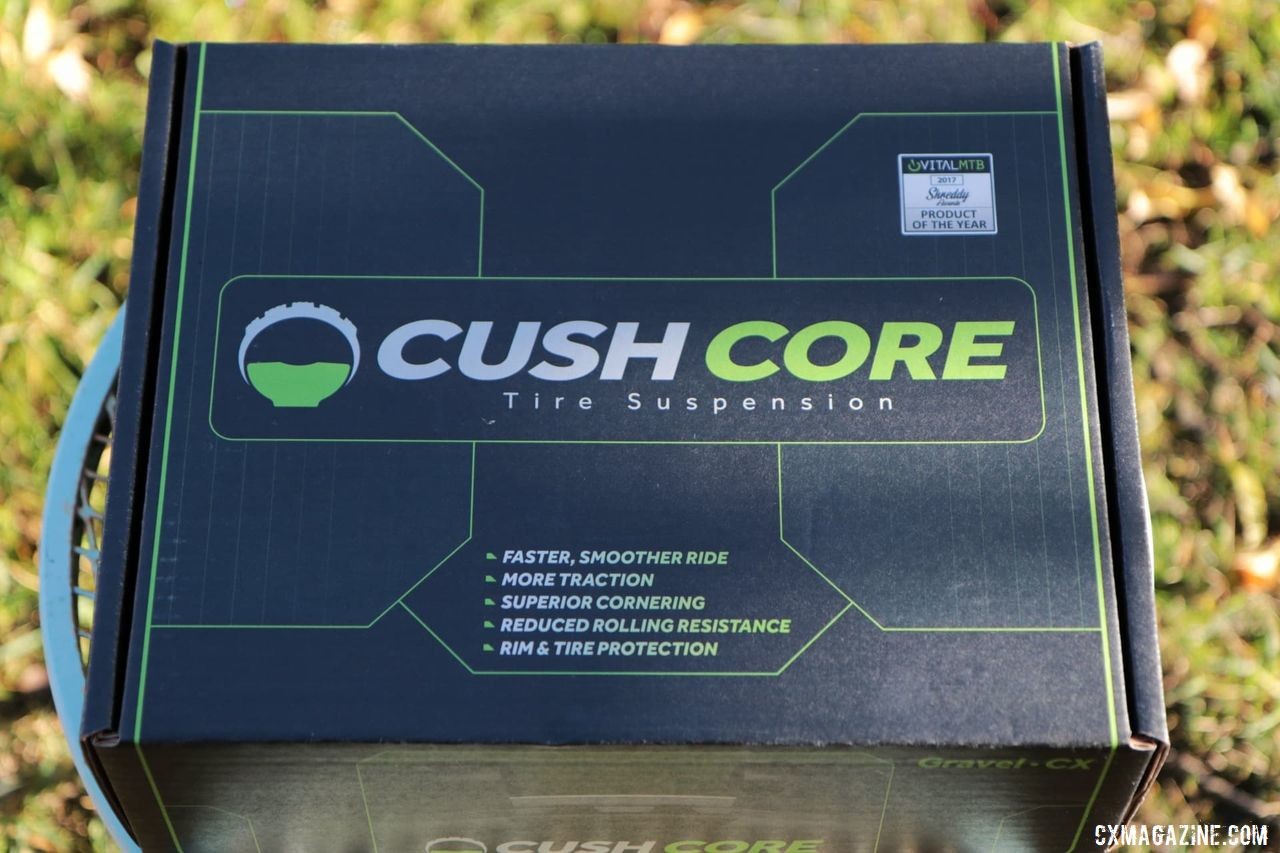
The CushCore Gravel/CX insert is designed to help with tubeless setups. CushCore Gravel/CX Insert. © A. Yee / Cyclocross Magazine
The inserts are also available separately for $75 without the valve stems.
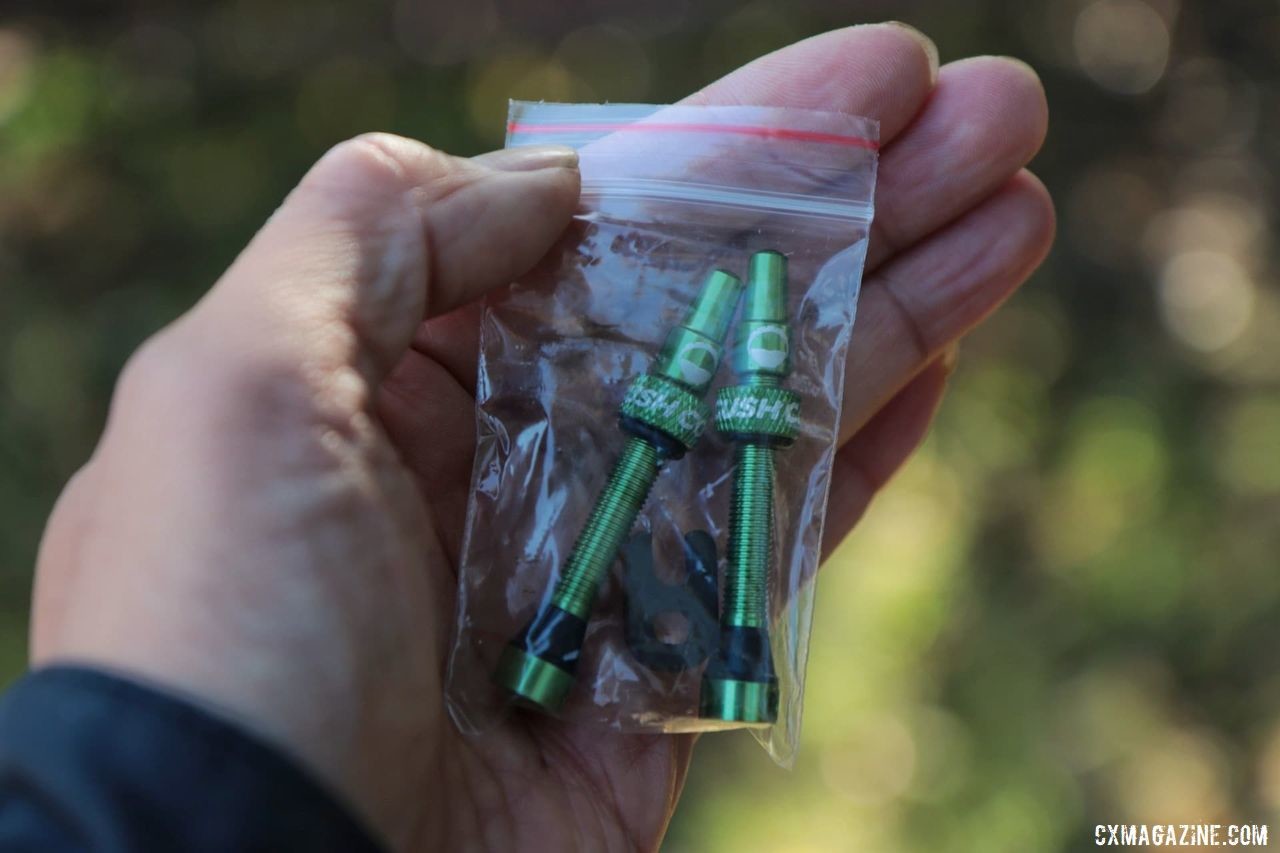
The valve stems help allow the system to work properly. CushCore Gravel/CX Insert. © A. Yee / Cyclocross Magazine
The valve stems cost $25 a set. The stem is anodized, with the air holes opening parallel to the rim rather than perpendicular as with a standard valve stem. The design aids in sealant dispersion since the CushCore insert sits tightly above the stem. The CushCore insert does have channels for the sealant to travel around, but it will flow in much more easily with the included valve stem.
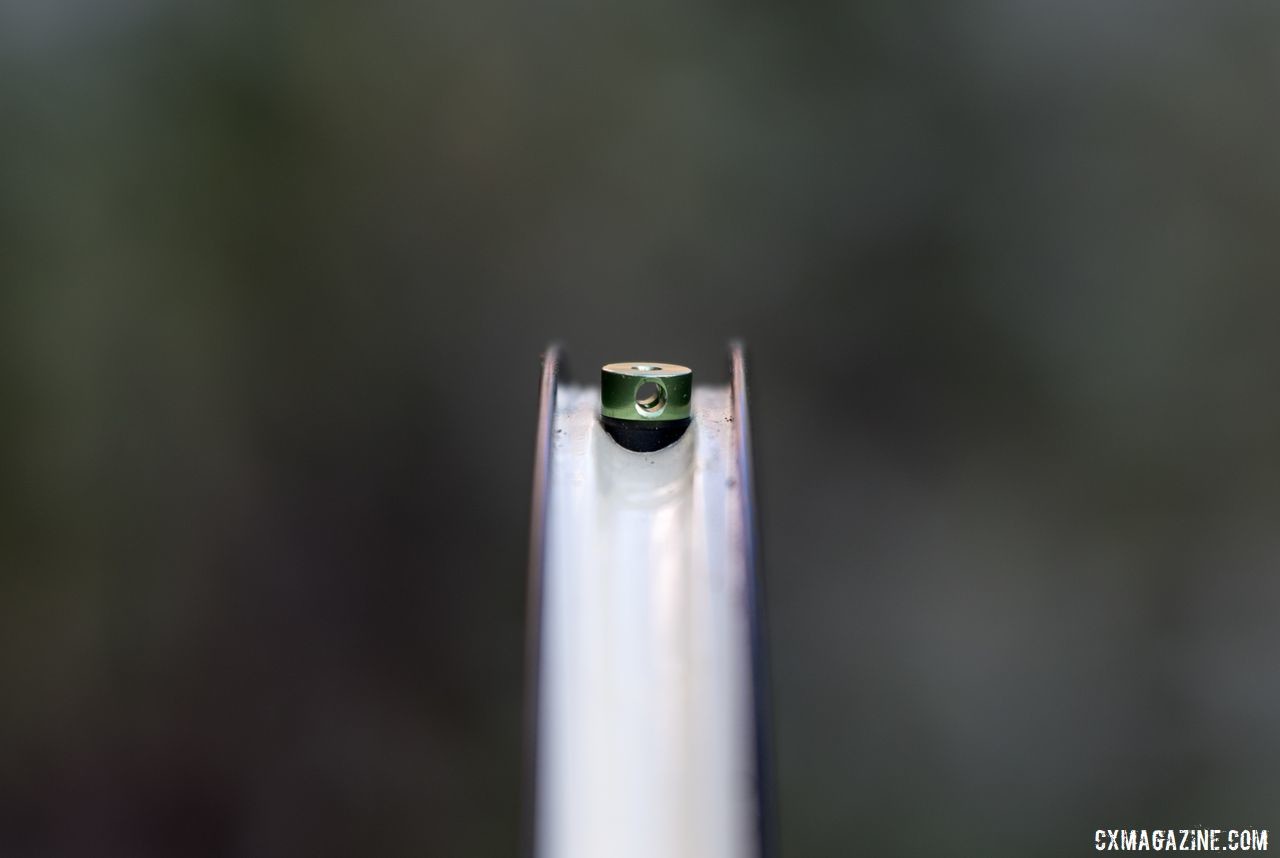
The valve stem opens horizontally, not vertically. CushCore Gravel/CX Insert. © C. Lee / Cyclocross Magazine
CushCore Installation
The CushCore kit provides installation instructions, and the website has instructional videos, but I still found a noticeable learning curve for installation and removal of the insert.
The CushCore insert stretches onto a tubeless-ready rim like a tubular would. Because the CushCore prevents sealant from swishing around, your rim taping skills definitely have to be up to snuff to get a full seal.
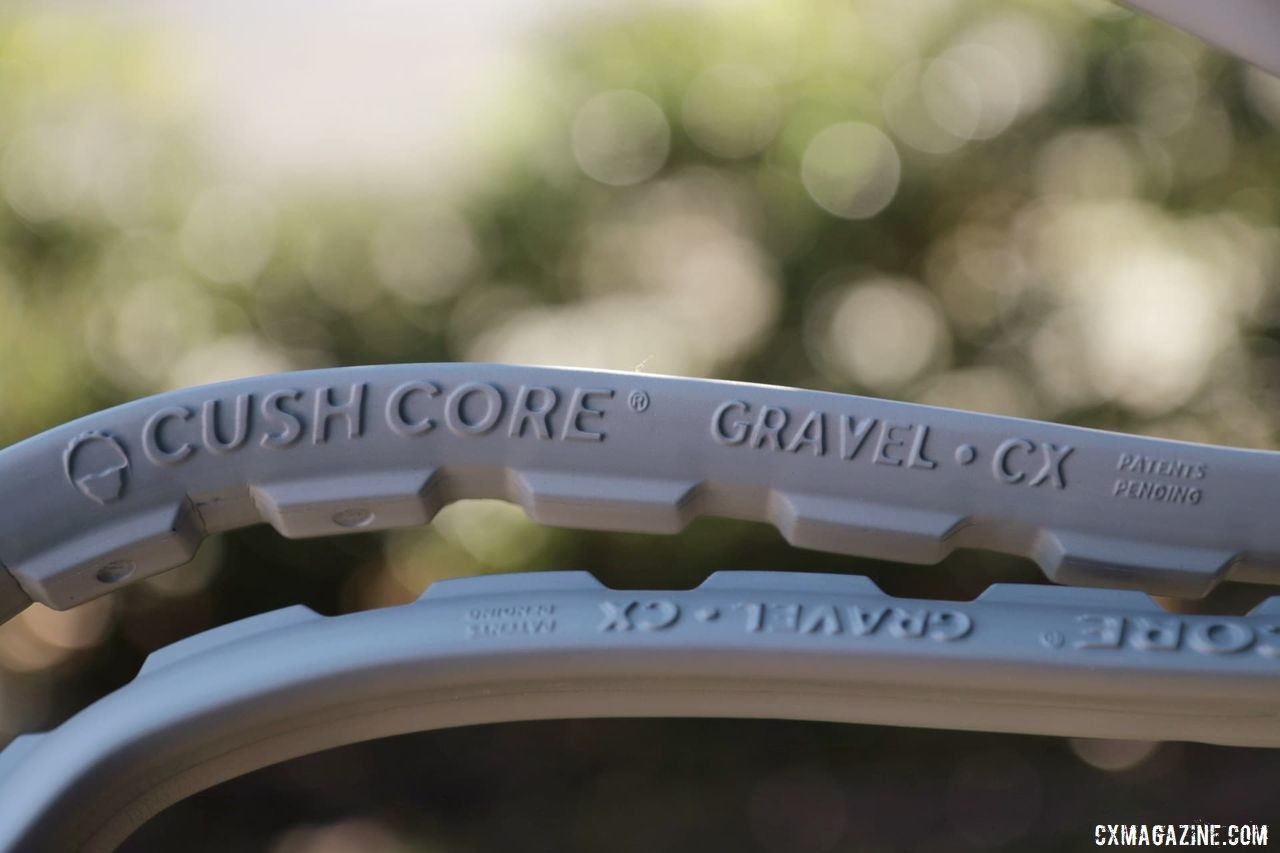
The design has gaps to allow sealant to move around. CushCore Gravel/CX Insert. © A. Yee / Cyclocross Magazine
Once the insert is in place, you lubricate the tire with soapy water and then mount it by pushing the tire bead into the rim channel below the insert. For my test setup, I mounted a 38mm Specialized Tracer tire on an Alex Rims Baxter 3.0 carbon rim that has a hookless profile and 25mm internal width.
I found this part of the installation process to be pretty challenging the first time around. In total, my first attempt took about half an hour to mount a tire that might usually take 10 minutes to get set up. It did, however, get faster and easier with experience.
Even with a 38mm tire and a wide internal width rim, I still had to work hard to push the tire bead below the CushCore insert. The 38mm tire width is in the middle of the recommended range for the Gravel/CX CushCore, which suggests narrower 33/35mm cyclocross or gravel tires might be even more difficult to mount. The CushCore itself is pliable and the instructions provided are helpful, so it is doable, however.
CushCore Ride Impressions
CushCore’s website recommends running tires 1-5psi lower than you normally would. For a setup such as the 38mm tires on 25mm internal rims, I might typically start as low as 18psi in the rear (I weigh 155 pounds), although the rim tends to bottom out on roots and I don’t really like the fold-over in corners. Usually I will ride around 24psi.
I decided to go all-in on testing the CushCore and started at 15psi front and rear, which definitely seems shockingly low, especially for a rear tire.
Starting out on the road, the ride was remarkably smooth, and the low pressure allowed the tires to soak up small vibrations and bumps. Most remarkably, the tires did not bounce out of small dips and cracks nor bottom out as they might have had I not been running the CushCore inserts. Pushing the pace through corners, the disconcerting feeling of a tire folding was largely absent. All of that was at just 15psi.
If I am being honest, the shallow tread of the Tracer often makes it a less-than-ideal choice for the dry, loose conditions of warm California autumns. With the surface area of the tire increased thanks to the low pressures I could run, the tires had remarkable—and maybe a bit unexpected—traction. I did not notice the tire bottoming out, even over roots and rocks, and handling through chicanes was solid and predictable.
Based on past experience with suspension saddles, seatposts and decouplers, the ride with the CushCore at low pressures was the smoothest of those options because the tires absorb the bumps at their source. CushCore’s website cites an independent study from Motion Instruments that support my experience. It is just a single study, but it is a start and certainly better than pure theory.
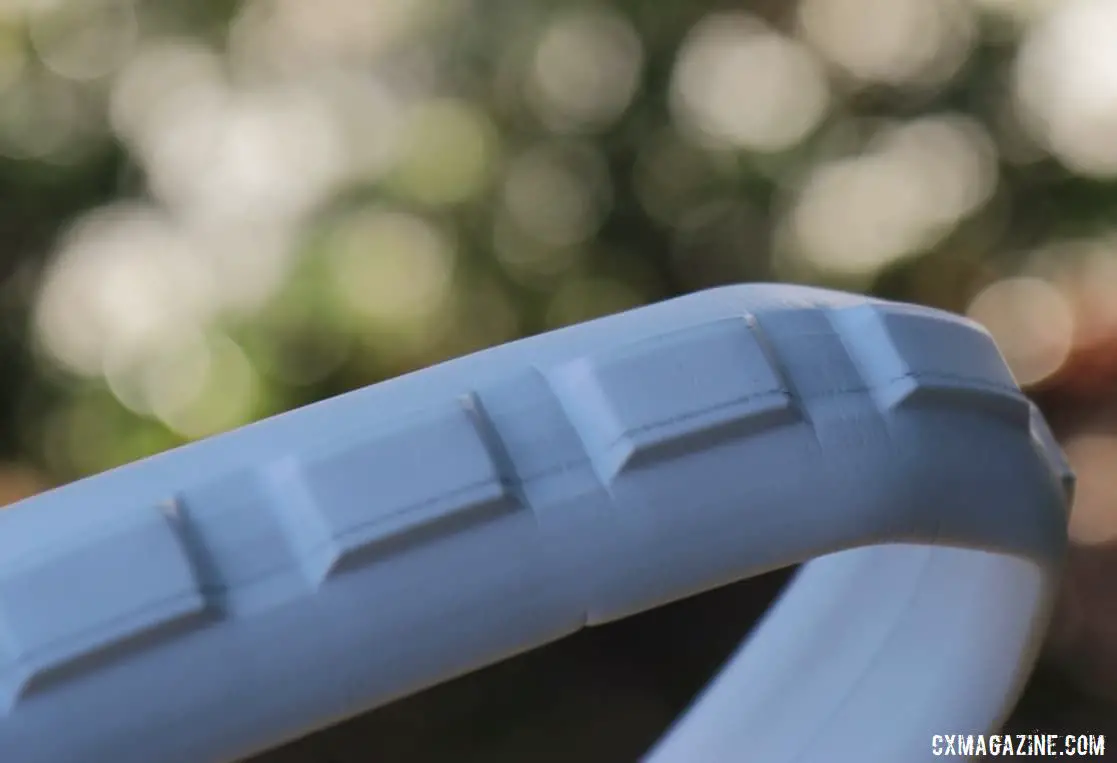
The CushCore insert provides sidewall stability. CushCore Gravel/CX Insert. © A. Yee / Cyclocross Magazine
The improved ride experience does come at a weight cost. The 125g for the insert and then 60g of tire sealant weighs more than a tube would.
To save weight, CushCore says you can potentially run lighter tires with the CushCore insert, which my experience supports given the sidewall support and protection provided by the insert. You could also potentially save weight by riding a less aggressive tread, although most tires in a given use and category generally weigh about the same.
Despite adding some heft to both tires, I did not immediately notice the additional weight. On the road, the tire felt similar to a normal insert-less tire at 24psi, but I did notice a bit of a decrease in snap and acceleration when sprinting hard.
For cyclocross, I think the CushCore is a net benefit, despite the increased weight. On one hand, the weight penalty will tax you during the constant accelerations for 30 to 60 minutes, but the lower tire pressures should allow you to carry more speed through turns thanks to the additional traction. The damped suspension effect would also be of benefit on technical, rocky, rooty courses where bouncing tires can really slow you down.
For gravel, unless you are coming to the line ala Land Run 2018, courses are long and the climbs are usually more steady. Add in the rough roads, and the extra cush is likely to make your ride smoother and more enjoyable. Even if you do not push the tire pressure limits like I did, I found pressures on the order of 18, 20 and 24 psi still provided a more comfortable ride than what I might have expected out of my tire/rim combination.
Not every ride is going to go perfectly, and sometimes tubeless setups get flats. For smaller punctures, a tire with the CushCore insert can be fixed with a plug and sealant. If your tire gets slashed and you have to go to a tube, you will have to remove the insert for it to fit. That means you will either have to stuff the sealant-y foam core in your kit or go old school by wearing it like a bandolier. At nearly $40 an insert, it would be expensive to leave it laying on the side of the road, and you shouldn’t litter anyway.
The Verdict
Our experience has shown that riding lower pressures for both cyclocross and gravel with tubeless setups greatly contributes to ride quality and handling confidence. The CushCore insert is a well thought out product that allows you to run a lower tire pressure than you normally would and access those benefits of a tubeless setup.
Our testing of the Gravel/CX CushCore showed increased compliance when going over bumps and roots, and the foam insert provided noticeable sidewall support.
The benefits of the CushCore do come at a cost, with a kit costing $150 and the setup adding 125g to each wheel versus a regular tubeless setup. I also found that setting the CushCore up can be a bit challenging and frustrating, so allot some extra time and patience at first.
Once you get rolling with the CushCore insert, the benefits are easy to experience as you take full advantage of what tubeless setups can offer.
CushCore Gravel/CX Kit Specs
MSRP: $150 for 2 inserts and 2 valves
Weight: 125g / insert
Tire Widths: 700c x 33-46mm
More Info: cushcore.com













